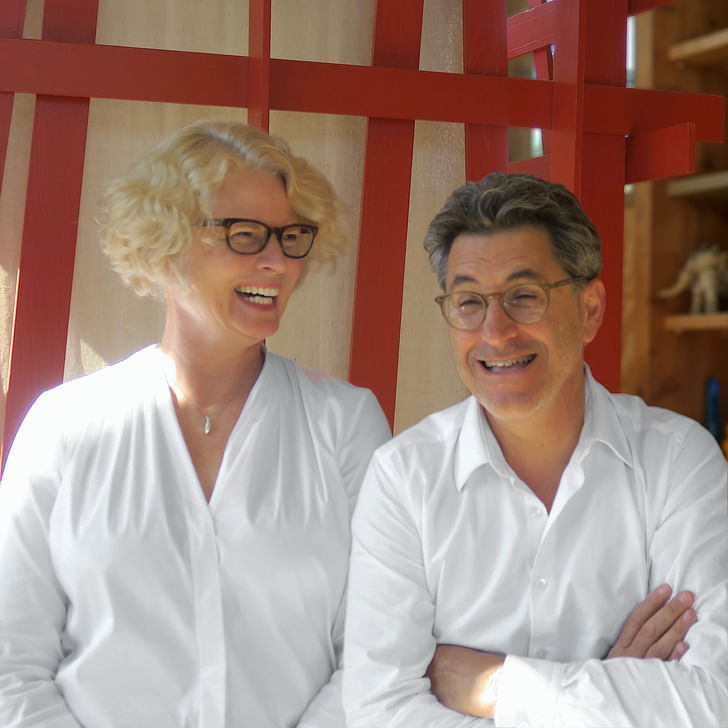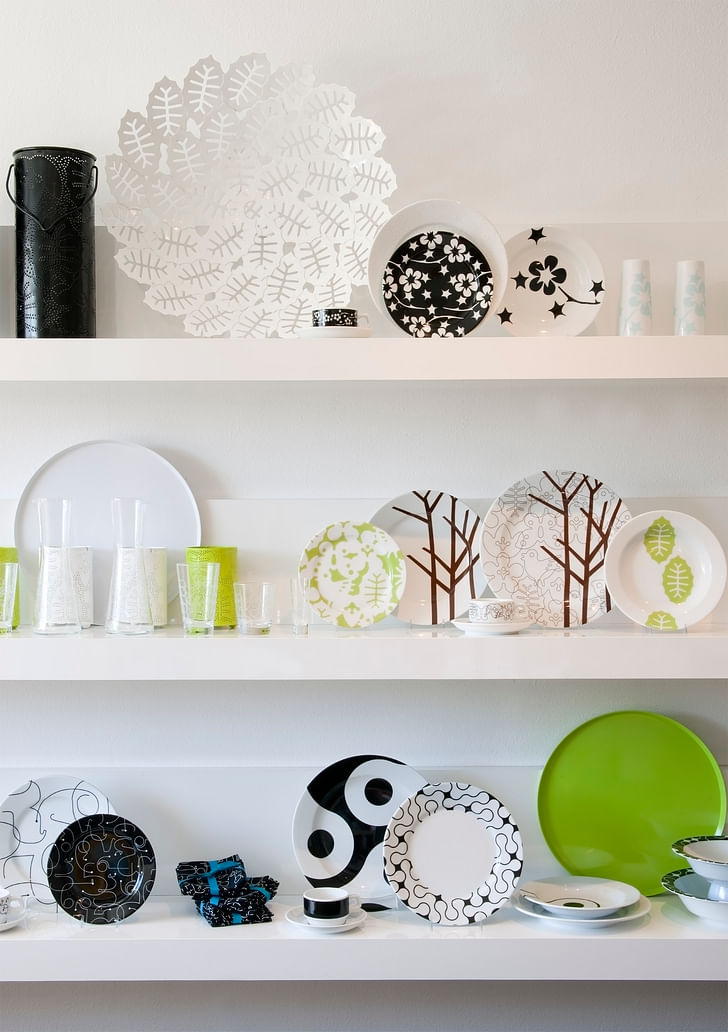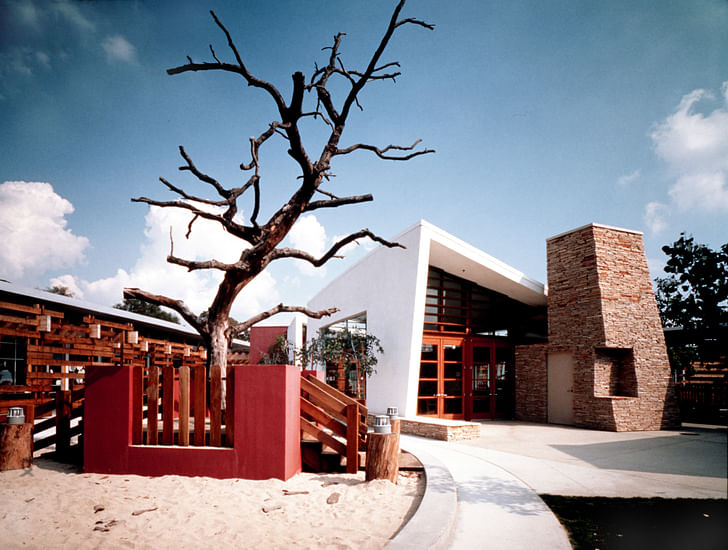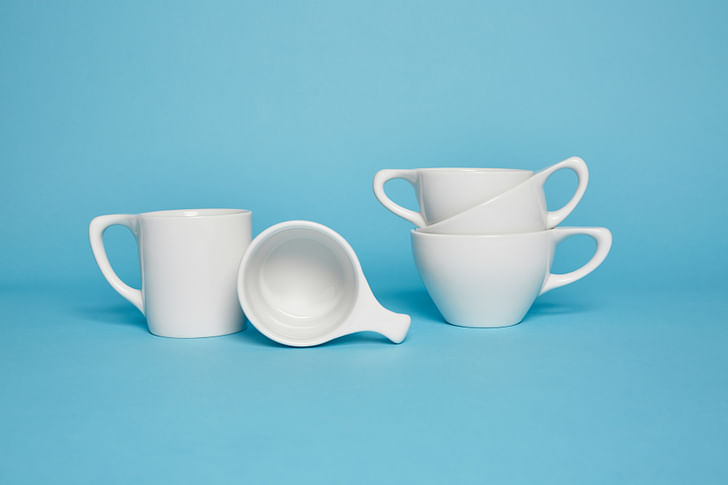

Architects Julie Smith-Clementi and Frank Clementi recently launched Smith-Clementi, a new multidisciplinary design practice that aims to operate at the intersection of architecture, product, and urban design. The creation of this new firm follows a 28-year run for the pair at Rios Clementi Hale Studios, where the two designers led a variety of award-winning projects at a variety of scales, "from plates to parks," according as they explain it.
Now, with a new fledgeling practice up and running, the two architects are poised to embark on a "more genuine and productive continuation of what we’ve long valued and in fact loved about the practice of design" via a slate of ambitious projects around the country.
For this week's Studio Snapshots installment, Archinect chats with Clementi and Smith-Clementi to discuss what prompted the desire to start a new practice and working without regard to geography or scale while reveling in "radical difference."
You recently left Rios Clementi Hale Studios, a practice that you had helped start and ran for 28 years—What prompted you to re-start your careers in this way?
To us, this is not a restart, but a more genuine and productive continuation of what we’ve long valued and, in fact, loved about the practice of design.
Throughout our 30-year practice, there were times when we pivoted in different directions. In 2001, Julie launched notNeutral, starting out in a trailer in the parking lot and building it into a global brand. About 10 years later, Frank took a leave of absence to collaborate with Bijoy Jain at Studio Mumbai, in India, on the design of two office towers in China. Both experiences were reinvigorating, and provided moments of collaboration and reconnection to the intimacy of design that we wanted to bring into our practice.
To us, this is not a restart, but a more genuine and productive continuation of what we’ve long valued and in fact loved about the practice of design.

The large office would continue to be creative and successful, but we realized that the nimbleness and presence that we wanted to bring to our projects was really only possible if we ourselves were nimble and present. And that we could successfully leave the complex mechanism of a large practice while maintaining the same scale of influence. We benefited from the cache clearing, and the new context to realize true change.

One outcome of the Great Recession has been industry-wide consolidation among small and medium sized firms by larger players; What inspired you to go against this trend?
Yes, consolidation was one outcome, which of course provided the needed security in the post recession design industry through horizontal economies of scale. At the same time we also saw a fragmentation into myriad experiments in related design practices and locations, creating a kind of “society of design.” And a renewed desire to be directly socially relevant. The arrival of individually empowering tools and re-structured business interactions coincided with the post-recession reconstruction.
We now have the agility to do billable work from anywhere in the world, even in transit, while combining the talents of equally dispersed collaborators towards a project’s common goal. What we’ve found already is that our autonomy is giving us a more direct relationship with clients and a more fruitful process within multiple teams.
We now have the agility to do billable work from anywhere in the world, even in transit, while combining the talents of equally dispersed collaborators towards a project’s common goal. What we’ve found already is that our autonomy is giving us a more direct relationship with clients and a more fruitful process within multiple teams.
What have been some of the hurdles in terms of setting out on your own after having such lengthy business relationships with other firms and individuals?
Those relationships haven’t gone away, and our new approach will only strengthen them. What’s been interesting is that while most small firms have small projects, we are a small firm with large projects. Both of us have always been makers and doers more than pointers and managers—and together, we still embody all the skills to run a firm—but yes, it’s challenging when you can only delegate to yourself. But it’s quite enjoyable to see how many different people you’ve interacted with and how many skills you’ve relied on at the end of the day.
Where do you see your firm in 5 years and what do you want your practice to be known for?
Thinking about legacy and a firm’s five-year plan is part of what we are consciously moving away from by setting out on our own. These aren’t the important questions. We want to focus our attention on the present and its needs, not the future and our egos. We have the confidence and experience necessary to believe that our honest choices now will naturally fit into a coherent narrative retrospectively.
Thinking about legacy and a firm’s five-year plan is part of what we are consciously moving away from by setting out on our own.
So, we are taking the opportunity to envision a more productive way to practice. One that engages and collaborates with amazing people all over the world without having to carry the large infrastructure of a firm. Already, from Milan to Los Angeles to India, what matters for us are not offices but relationships, quality of life, and translating discrete, particular experiences into beautiful design.

Do you have a favorite project? Completed or in progress.
This is always a little like picking your favorite daughter, but we’ll look back at our past work: an early one and a more recent one are worth talking about.
Warner Bros. Children’s Center stands out as setting the paradigm for our approach to design. It embodied the challenges and instilled methods that engage us to this day. To start with, it was a non-standard typology: It wasn’t a workplace or a playground, nor a home or school, but rather a complex boundary condition. It was meant to serve a wide-ranging user group: children, parents, and caregivers. But none of the users were actually the client. Moreover, our solution had to integrate all sorts of disciplines: landscape, graphic design, and product design with architecture. Stylistically, we drew upon everything from the work of Richard Neutra to Looney Tunes. And, in the end, it not only worked, but was also recognized, winning a National AIA Honor Award.
More recently we designed and produced a glass for a coffee drink originating in the bars of Spain, the “Cortado.” It was super exciting to embed the traditional mass produced hexagonal “Gibraltar” glass with our barista-informed internal curvature. It was surprising to get so many practical and cultural references in such a simple intimate object. And it too was recognized with a Gold Muse-Design award.
Do you have a dream project you’re hoping to work on?
We’ve created a situation that allows each next project to be a dream project, both because of our freedom and our clarity of approach. That said, we are driven by certain interests. The complexity of constituents is interesting to us. We are compelled by work that serves people with contrasting interests—client, user, spectator, performer, worker—but especially those of different professional, social or cultural identity, and backgrounds. We are drawn towards opportunities for sharing and for the integration of multiple disciplines to address complex issues, such as social and economic inequity.
Over the years, you have worked on some very prestigious public realm projects, including the Hollywood Bowl in Los Angeles and many others, often through very tactical and furniture-scale approaches. Can you share some thoughts regarding your approach to melding furniture and urban design in these projects?
Yes, it’s perfect that you mention two disciplines that straddle architectural scale. We really don’t see the boundary between scales. Design is the only way we know to answer questions, so it doesn’t really matter what the scale is. Often the best answer is outside the range of expectations set forth by the question, we have often found success working at the edges of a discipline, blurring the boundaries between architecture, landscape, graphics, interiors, and product.
We really don’t see the boundary between scales. Design is the only way we know to answer questions, so it doesn’t really matter what the scale is.

Aside from architectural practice, your work has also spun off a separate design company, notNeutral, which you also parted ways with to start your new practice—How does designing objects for household and personal use shaped your perspectives as architects?
It has to do with the combination of intimacy and reach.
When you focus on the intimate scale of an object, like an espresso cup, your approach necessarily includes things you can feel but not see. Once you’ve done so, your perception changes for the possible solutions that you bring to the urban scale. The social and emotional content that is inherent to these personal objects then informs and improves the architecture.
In fact, some of our products have reached millions more people than the largest of our built projects.
In leaving notNeutral, we will continue to explore ways to provide access to thoughtful design to more people. Not everyone can afford an architect. Products are handheld and intimate, yet are not restrained to site and have broad reach. Mass produced objects exist at both ends of the scale spectrum at which we operate. In fact, some of our products have reached millions more people than the largest of our built projects.
It’s also worth noting that once you’ve experienced the freedom to mix beauty and utility that product design offers, it’s hard to leave that behind at any other scale.

Stylistic, formal, and material eclecticism run throughout your work. The late critic and historian Charles Jencks once wrote, “Eclecticism is the natural evolution of a culture with choice.” Speaking from a design perspective, do you think there is too much choice today? Not enough?
We’ve talked about this, and both of us would actually like even more genuine choice. The choice that Jencks refers to is more superficial, stylistic choice, and the “eclecticism” that results is equally superficial -- a veneer and a pastiche. Our work is driven to find new methods and perspectives or even mis-applications from related fields, as opposed to drawing disparate items from existing catalogs. We have no interest in visual distinctions without actual difference.
Our work is driven to find new methods and perspectives or even mis-applications from related fields, as opposed to drawing disparate items from existing catalogs. We have no interest in visual distinctions without actual difference.
So, we work very hard to find solutions via novel approaches, radical difference, and fundamental distinctions. We’re lucky to be informed by our exposure to wide-ranging disciplinary backgrounds and cultural experiences. These solutions are synthetic, a re-assembly of good practices from multiple donors. We are dedicated to beauty, and here it comes from the calibration of familiar precedents with exotic and striking approaches in uncanny union.
Antonio is a Los Angeles-based writer, designer, and preservationist. He completed the M.Arch I and Master of Preservation Studies programs at Tulane University in 2014, and earned a Bachelor of Arts in Architecture from Washington University in St. Louis in 2010. Antonio has written extensively ...
No Comments
Great people and their worldview, supporting their bigtime love of architecture. The inspiration they spread out is beautiful. That whole office is like a superstar performance in my book.
Block this user
Are you sure you want to block this user and hide all related comments throughout the site?
Archinect
This is your first comment on Archinect. Your comment will be visible once approved.